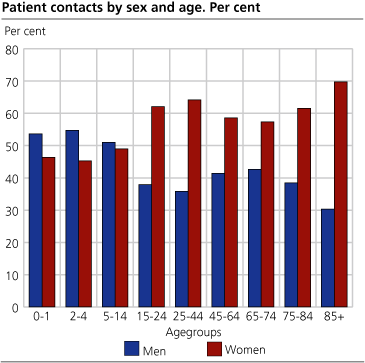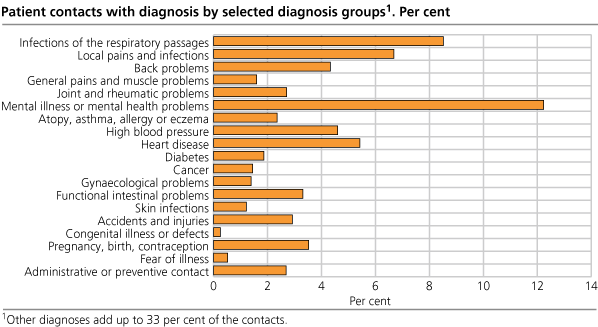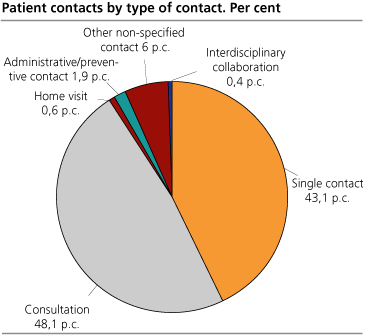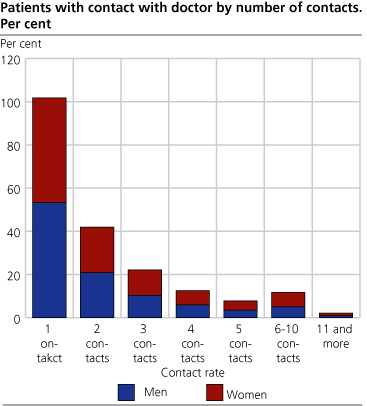General Practitioners
Mental health problems are the most common diagnosis
Published:
Twelve per cent of all patients that are given a diagnosis by their GP are diagnosed as having a mental health problem, which is the most common diagnosis of all. Many of the patients who are given the diagnosis are young, with 39 per cent being aged between 25 and 44.
It is only when the patient perceives himself to be having a major problem that the GP gives the diagnosis “mental health problem”. This covers problems such as anxiety, depression, personal crisis and psychosis.
Statistics indicate what illnesses we have
In addition to mental health problems, infections of the respiratory passages, local pain and infections, and heart disease are the most common diagnoses. Nine per cent of patients are given the diagnosis infection of the respiratory passages, and seven per cent are given the diagnosis local pains and infections. There are slight differences in the diagnosis pattern between men and women.
The greatest difference between women and men is within the heart disease diagnosis. While seven per cent of the men are given the heart disease diagnosis, only four per cent of the women receive the same diagnosis. Heart disease increases noticeably with age. In the age group 85 and older, heart disease accounts for almost a fifth of all diagnoses for both genders.
Almost half of the diagnoses given by doctors during a consultation are acute while chronic illnesses account for around 41 per cent of diagnoses. Among the chronic illnesses, the most common are high blood pressure, heart rhythm problems and diabetes.
Frequency of visits remains the same
On average, we have contact with our doctor more than four and a half times a year via telephone, visits, consultations or home visits. The number of doctor consultations is around two a year per person. There is only a very slight increase in how often we contact our GPs. Previous surveys show that the number of times that we are in contact with our doctor has remained almost unchanged in the last 20 years.
New data material
Statistics Norway has collected data from 82 GPs’ patient records. This covers 100,600 inhabitants on the GPs’ lists. The data material contains a total of 52 000 patients and 119,800 patient contacts. The data are from January, February and March 2005.
More statistics to be published
Statistics Norway has created a large number of tables of statistics for different areas of the General Practitioner service. Only a few examples are shown here. In autumn 2006, a report of useful and interesting statistics will be released to the Directorate for Health and Social Affairs. The report will be available at http://www.ssb.no/.
Tables
- Table 1 Patients with contact with doctor by age and sex. Absolute figures and per cent. 2005
- Table 2 Patients with contact with doctor by type of municipality. Absolute figures and per cent. 2005
- Table 3 Patient contacts by list association and type of contact. Absolute figures and per cent. 2005
- Table 4 Patient contacts with diagnosis by diagnosis group and sex. Absolute figures and per cent. 2005
- Table 5 Estimat of average number of patient contacts and consultations in the year, by sex and age. 2005
- Table 6 Diagnoses that are chronic, by number and sex. Absolute figures and per cent. 2005
- Table 7 Consultations classified as acute, chronic and not sick, by sex. Absolute figures and per cent. 2005
Contact
-
Statistics Norway's Information Centre




